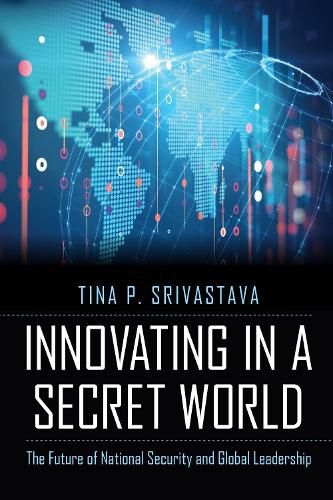Readings Newsletter
Become a Readings Member to make your shopping experience even easier.
Sign in or sign up for free!
You’re not far away from qualifying for FREE standard shipping within Australia
You’ve qualified for FREE standard shipping within Australia
The cart is loading…






Innovating in a Secret World addresses the conflict between America’s need for the most sophisticated and advanced technology and the cloak of secrecy that makes it so difficult for our country to leverage the booming successes of technological innovation in the commercial, unsecret world. Our national security increasingly depends on access to the most sophisticated and advanced technology. Yet, the next time we set out to capture a terrorist leader we may fail. Why? The answer lies in a conflict between two worlds. One is the dynamic, global, commercial world with its thriving innovation landscape. The other is the world of national security, in which innovation is a matter of life or death. The conflict is about secrecy. Innovating in a Secret World is a detailed examination of the U.S. government and innovation landscapes and the current trends in national security-related research and development (R&D), so often secret. Author and researcher Srivastava evaluates whether the execution of technology innovation strategy in that world is unintentionally leaving certain innovations behind or is unintentionally precluding certain classes of innovators from participating. She identifies the unintended consequences and emergent behaviors that result. This unfolds in a complex, dynamic system that includes the legal framework in which technology innovation must exist. Srivastava suggests an emerging class of R&D strategy called open innovation?a strategy that pertains to broadening participation in innovation beyond an individual organization or division traditionally assigned to perform R&D activities. Through compelling stories of commercial and early government applications, Srivastava shows how open technology innovation strategies are promising and potentially advantageous in enabling, accelerating, and enhancing technology innovation. If open innovation could be successfully applied to closed U.S. government R&D, the benefits to national security and global leadership would be profound. AUTHOR: Tina P. Srivastava is an innovator, entrepreneur, and technology expert. Her experience spans roles as chief engineer of electronic warfare programs at Raytheon to co-founder of a venture-backed security startup. She is an FAA-certified pilot and instructor of MIT’s Pilot Ground School course. Srivastava earned her PhD in Strategy, Innovation, and Engineering, a masters in System Design and Management, and a bachelors in Aeronautics and Astronautics, all from MIT.
$9.00 standard shipping within Australia
FREE standard shipping within Australia for orders over $100.00
Express & International shipping calculated at checkout
Innovating in a Secret World addresses the conflict between America’s need for the most sophisticated and advanced technology and the cloak of secrecy that makes it so difficult for our country to leverage the booming successes of technological innovation in the commercial, unsecret world. Our national security increasingly depends on access to the most sophisticated and advanced technology. Yet, the next time we set out to capture a terrorist leader we may fail. Why? The answer lies in a conflict between two worlds. One is the dynamic, global, commercial world with its thriving innovation landscape. The other is the world of national security, in which innovation is a matter of life or death. The conflict is about secrecy. Innovating in a Secret World is a detailed examination of the U.S. government and innovation landscapes and the current trends in national security-related research and development (R&D), so often secret. Author and researcher Srivastava evaluates whether the execution of technology innovation strategy in that world is unintentionally leaving certain innovations behind or is unintentionally precluding certain classes of innovators from participating. She identifies the unintended consequences and emergent behaviors that result. This unfolds in a complex, dynamic system that includes the legal framework in which technology innovation must exist. Srivastava suggests an emerging class of R&D strategy called open innovation?a strategy that pertains to broadening participation in innovation beyond an individual organization or division traditionally assigned to perform R&D activities. Through compelling stories of commercial and early government applications, Srivastava shows how open technology innovation strategies are promising and potentially advantageous in enabling, accelerating, and enhancing technology innovation. If open innovation could be successfully applied to closed U.S. government R&D, the benefits to national security and global leadership would be profound. AUTHOR: Tina P. Srivastava is an innovator, entrepreneur, and technology expert. Her experience spans roles as chief engineer of electronic warfare programs at Raytheon to co-founder of a venture-backed security startup. She is an FAA-certified pilot and instructor of MIT’s Pilot Ground School course. Srivastava earned her PhD in Strategy, Innovation, and Engineering, a masters in System Design and Management, and a bachelors in Aeronautics and Astronautics, all from MIT.